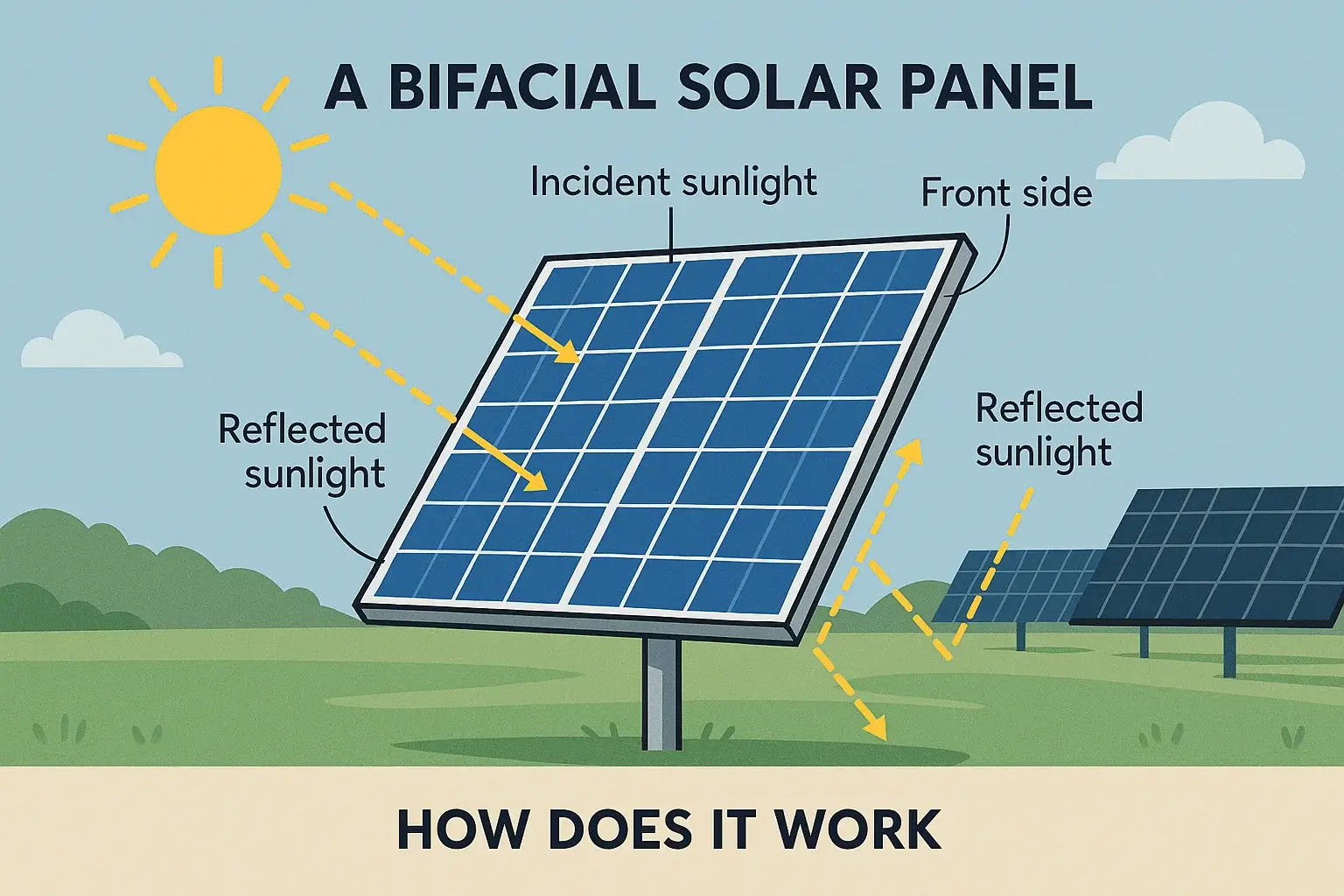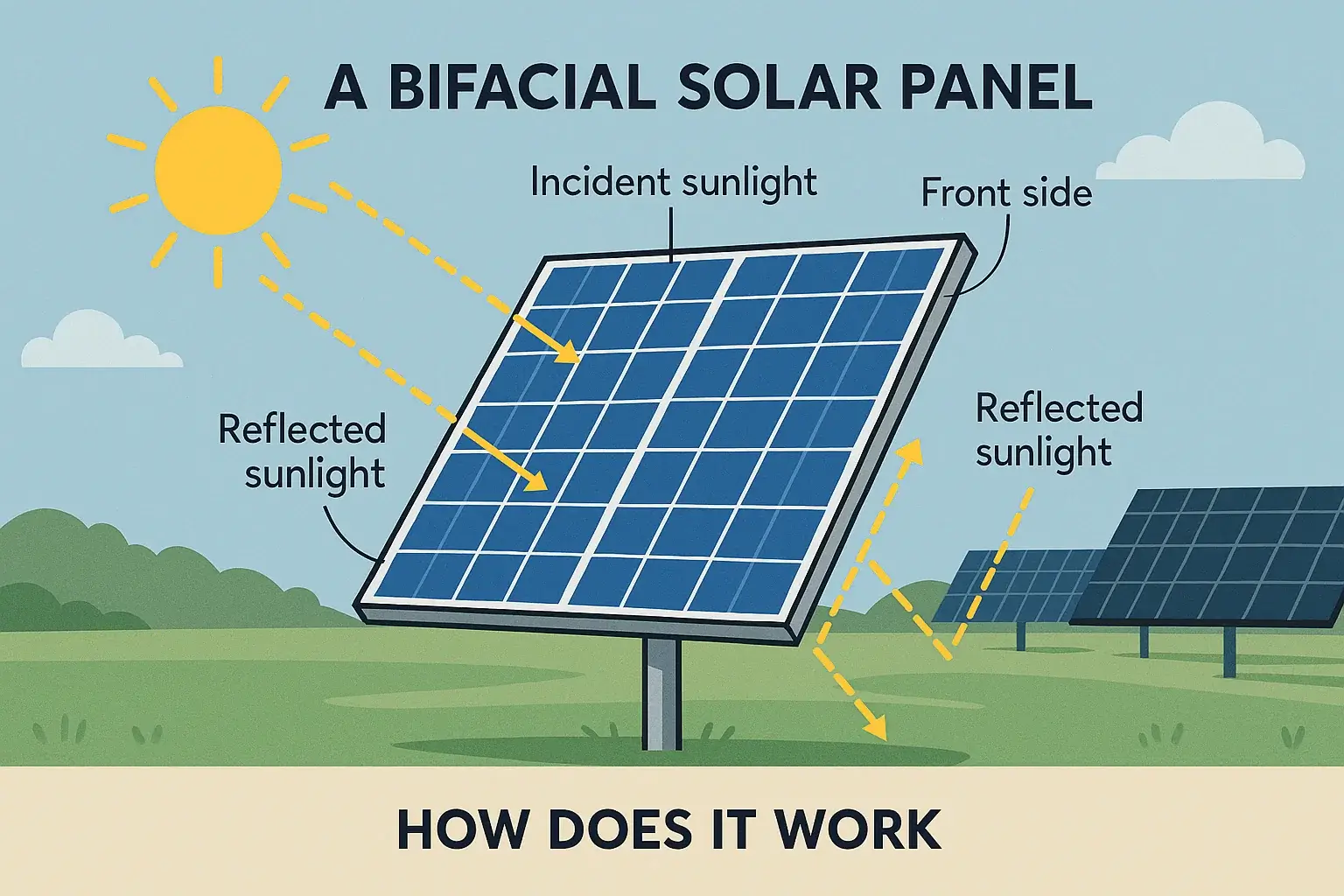What is DCR Solar Panels
Solar energy has obtained huge popularity in recent days because it is considered a clean and sustainable power source. It looks like a perfect alternative to the conventional electricity method, so many residential and commercial places wish to opt for solar energy. Due to the increasing demand for solar installation, it becomes mandatory to learn in-depth about DCR (domestic content requirement) and non-DCR solar modules. In this blog, you are going to understand the DCR solar panel along with its potential benefits and challenges. It helps you make an informed decision when it comes to installing solar panels in your space.
DCR Solar Panels
DCR is the term coined by the Ministry of New and Renewable Energy (MNRE) to encourage the use of made-in-India solar panels. The DCR solar panel refers to the solar panels in which the solar modules and cells are manufactured within the country by following the domestic content requirement policy. It is an initiative step used to promote local manufacturing industries and minimize dependency on imports. In addition, it gives pace for the home-grown industries to flourish in the competitive global marketplace.
In the early 2010s, the concept of DCR went into effect as a major part of India’s National Solar Mission. The major objective of this launch is to fortify the domestic solar manufacturing industry against overwhelming imports. It is especially from the countries well-known for their lower cost and large-scale solar panel production. Reserving the particular portion of the solar market with a higher domestic content offers a competitive edge for the local manufacturers. As a result, it stimulates economic growth, job creation, and technological innovation within the country.
Major Components of DCR Solar Panels
Although the essence of the DCR solar panel lies in its stringent adherence to domestic content norms, the major components of the DCR panels remain the same as conventional solar panels. Check below to know the components of the DCR solar panels!
-
Solar Cells: The primary component that helps convert sunlight into electricity is solar cells.
-
Glass Sheet: Glass sheet safeguards the solar cells from environmental factors.
-
Frame: The frame is generally made of aluminum, which gives structural integrity to the solar panel.
-
Junction Boxes and Connectors: Junction boxes and connectors are mandatory for the solar panel’s electrical functioning, which ensures efficient and safe energy transfer.
-
Backsheet and Ethylene Vinyl Acetate: Backsheet and Ethylene Vinyl Acetate help encapsulate the solar cells and offer the best protection and insulation.
In the context of DCR, these components are manufactured with the help of materials sourced domestically.
Advantages of DCR Solar Panels
Economic Benefits:
DCR solar panels play a vital role in enhancing and elevating domestic industries. Boosting local production assists in fostering homegrown manufacturing units. It also paves the way for self-reliance and independence in the solar sector. The rise in domestic production maximizes job opportunities, right from manufacturing to sales. Besides, it reduces the dependency on imported solar components, which leads to saving huge foreign exchange, favorable trade balance, and strengthens the country’s economic status.
Environmental Benefits
DCR solar panels promote local sourcing while reducing the likelihood of carbon footprint linked with transporting solar components over long distances. On the other side, local manufacturers strictly adhere to stringent environmental conditions and norms. It makes sure that the materials used in the solar panel are sustainable and come with minimal environmental impact. It bolsters the solar sector and promotes the use of clean and sustainable energy indirectly. Thus, the country takes a step to fight against global climatic change.
Technical Advantages
Local manufacturing guarantees the best quality control and assurance because it gives the opportunity to monitor the production process closely and ensure it meets domestic standards. Beyond that, domestic manufacturers gain the flexibility to design and manufacture solar panels customized to the customer requirements and local conditions. All these things contribute much to faster delivery time and quick and reliable solutions to all the logistical and technical challenges. Thus, customers will never confront any troubles and get the expert’s support whenever required.
Challenges Involved in DCR Solar Panels
Although DCR solar panels provide unlimited benefits, it often comes with certain challenges. It is mandatory to overcome these challenges to make this initiative successful and useful. Here are the potential challenges of the DCR solar panels.
Cost: DCR panels can be expensive because of the need to meet the local manufacturing requirements and standards. So, consumers may spend a hefty amount from their pocket to install DCR solar panels in their places.
Availability: Compared to non-DCR solar panels, DCR solar panels may not be readily available and accessible. It increases the chance of delay and other related issues.
Regulatory Compliance: Not all manufacturers adhere to the local regulations and fulfill the specific project requirements when it comes to using DCR panels.
To conclude, DCR solar panels offer significant economic, environmental, and technical benefits by promoting local manufacturing and reducing reliance on imports. However, the challenges related to cost, availability, and regulatory compliance must be addressed to fully leverage the potential of DCR solar panels. By understanding these factors, you can make an informed decision when it comes to installing solar panels in your space.








